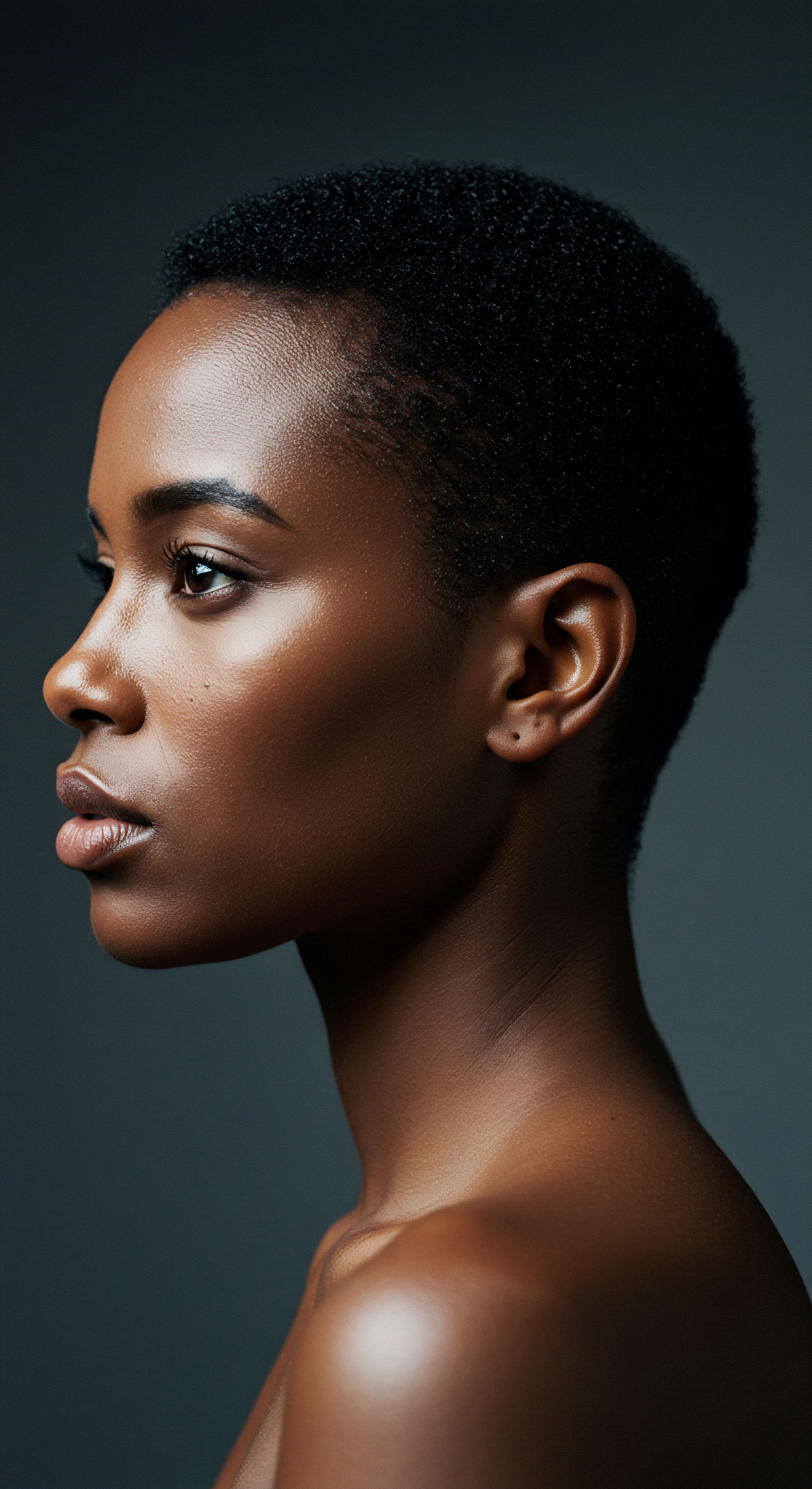
Roots
Consider the quiet hum of ancestry, a whisper carried not just through stories or traditions, but through the very strands that crown our heads. Each curl, coil, or wave holds a legacy, a blueprint passed down through generations, shaping not only its outward appearance but also its intrinsic needs. How deeply do these inherited traits influence the moisture requirements of textured hair?
It is a question that invites us to look beyond the surface, to understand the foundational biology that dictates how our hair interacts with the world, drawing in hydration or resisting it. This initial exploration grounds us in the fundamental principles, laying bare the science that underpins the daily rituals of care.
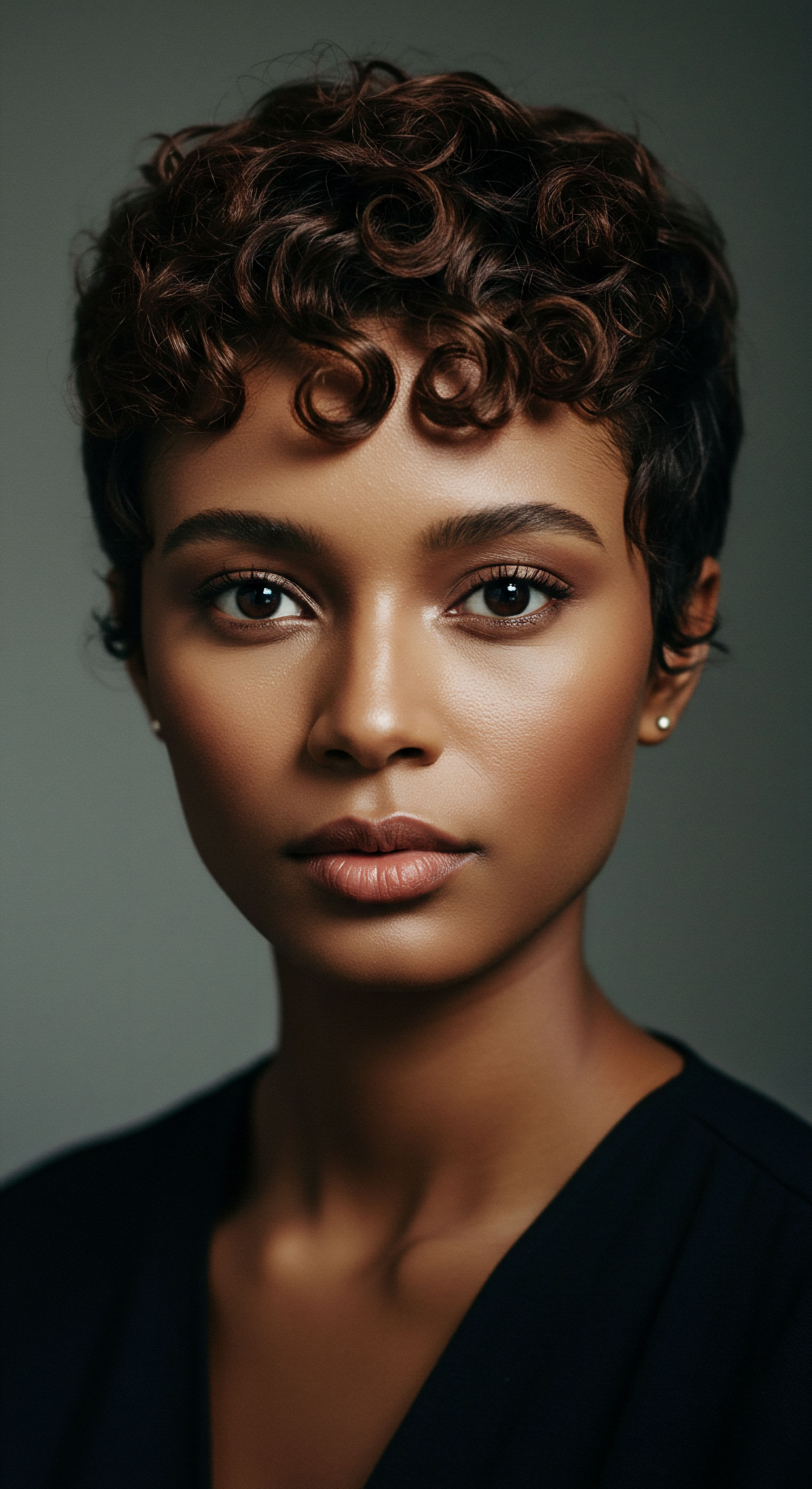
The Architecture of Textured Hair
The distinct forms of textured hair, from loose waves to tightly coiled strands, stem from the unique architecture of the hair follicle itself. Unlike straight hair follicles, which tend to be circular and grow straight out of the scalp, follicles producing textured hair are typically elliptical or even S-shaped. This asymmetry compels the hair strand to grow with a natural bend or curve, creating the characteristic curl pattern. The degree of this curvature profoundly impacts how natural oils, known as sebum, travel down the hair shaft.
On straight strands, sebum glides effortlessly, providing a natural coating. For textured hair, the twists and turns present a more challenging path, often resulting in less distribution of these protective lipids along the entire length of the strand. This inherent structural difference sets the stage for distinct moisture requirements.

Hair Follicle Shape and Sebum Distribution
The shape of the hair follicle directly influences the cross-sectional shape of the hair fiber. Highly curved follicles yield hair strands with an elliptical or ribbon-like cross-section, common in tightly coiled textures. This unique geometry creates points of weakness along the hair shaft where the cuticle, the outermost protective layer, may be more prone to lifting or even breaking.
When the cuticle is not smooth and tightly sealed, the hair’s ability to retain moisture diminishes, making it more susceptible to dryness and environmental stressors. The path sebum takes from the scalp to the ends is also compromised by these structural variations.
The distinct shape of textured hair follicles dictates the curl pattern and influences how moisture is held within the hair fiber.
Consider the intricate interplay of genetics and environment. While our genes provide the initial blueprint for hair texture, external factors such as humidity, temperature, and styling practices interact with this inherited structure, further influencing moisture balance. For instance, in humid climates, textured hair may absorb more water from the air, leading to swelling and changes in curl definition. Conversely, in dry environments, the hair can lose moisture rapidly, leading to a brittle feel.

The Molecular Underpinnings of Hydration
Beyond the macroscopic structure, the microscopic and molecular components of textured hair play a critical part in its moisture dynamics. Hair is primarily composed of keratin, a protein, alongside water and lipids. The way these components are arranged and interact determines the hair’s porosity, its ability to absorb and retain water.
- Keratin Proteins ❉ The building blocks of hair, these fibrous proteins form a complex network. The specific arrangement and cross-linking of keratin, particularly the cysteine residues that form disulfide bonds, influence the hair’s strength and elasticity, as well as its capacity for moisture exchange. African hair, for example, often possesses a higher density of disulfide bonds, contributing to its unique structure.
- Hair Lipids ❉ These fatty substances are present both internally within the hair fiber and externally on the cuticle surface. They are crucial for maintaining hair integrity, hydrophobicity, and moisture. Interestingly, while Afro-textured hair is often perceived as dry, studies suggest it can have a higher overall lipid content compared to European and Asian hair. Despite this, the arrangement and type of these lipids, particularly a higher proportion of disordered apolar lipids, might contribute to its lower radial swelling in water and a tendency towards dryness.
- Water Content ❉ Hair’s water content is dynamic, constantly exchanging with the environment. Hydrogen bonds within the keratin structure are easily influenced by water, playing a significant role in hair elasticity and moisture properties.

The Role of the Cuticle and Porosity
The cuticle, the hair’s outermost layer, acts as a protective shield. It consists of overlapping scales that, when healthy and smooth, lie flat, creating a barrier that helps seal in moisture. In textured hair, particularly highly coiled strands, the cuticle scales may not lie as flat due to the strand’s curvature. This can result in a more open cuticle, leading to higher porosity.
High Porosity hair has cuticle layers that are raised, allowing water to enter and exit easily. While it can absorb moisture quickly, it also loses it just as fast. This can lead to hair feeling dry, especially in arid conditions.
Conversely, Low Porosity hair has tightly closed cuticles, making it difficult for water to penetrate initially, but once moisturized, it tends to hold onto that hydration more effectively. Understanding your hair’s porosity, an inherited trait influenced by cuticle structure, is a cornerstone of effective moisture management.
A compelling illustration of inherited traits influencing moisture needs surfaces in the study of specific genetic variations impacting skin and hair barrier function. While not directly hair-specific, research into the Filaggrin-2 (FLG2) Gene provides a powerful lens. Loss-of-function mutations in FLG2, particularly observed in individuals of African descent, have been linked to persistent atopic dermatitis, an inflammatory skin condition characterized by impaired skin barrier function and reduced moisture retention. Filaggrin proteins are critical for forming the epidermal barrier and maintaining hydration in the skin.
Given the continuous nature of the integumentary system, a compromised skin barrier on the scalp, influenced by such genetic predispositions, can indirectly affect the hair’s ability to maintain its optimal moisture levels. The scalp microbiome, too, is influenced by genetic factors, which in turn affect sebum production and moisture retention, potentially contributing to scalp conditions that impact hair health. This wider biological context highlights that the genetic influences on moisture extend beyond the hair shaft itself, encompassing the very skin from which it grows.

Ritual
Stepping from the fundamental understanding of inherited traits, we now turn our attention to the practices that honor and support textured hair’s unique moisture requirements. Daily or periodic care rituals are not merely routines; they are conversations with our strands, informed by the science of their being. This section delves into the thoughtful application of knowledge, exploring how understanding genetic predispositions can guide our choices in products and techniques, transforming care into a deeply personal and effective endeavor.
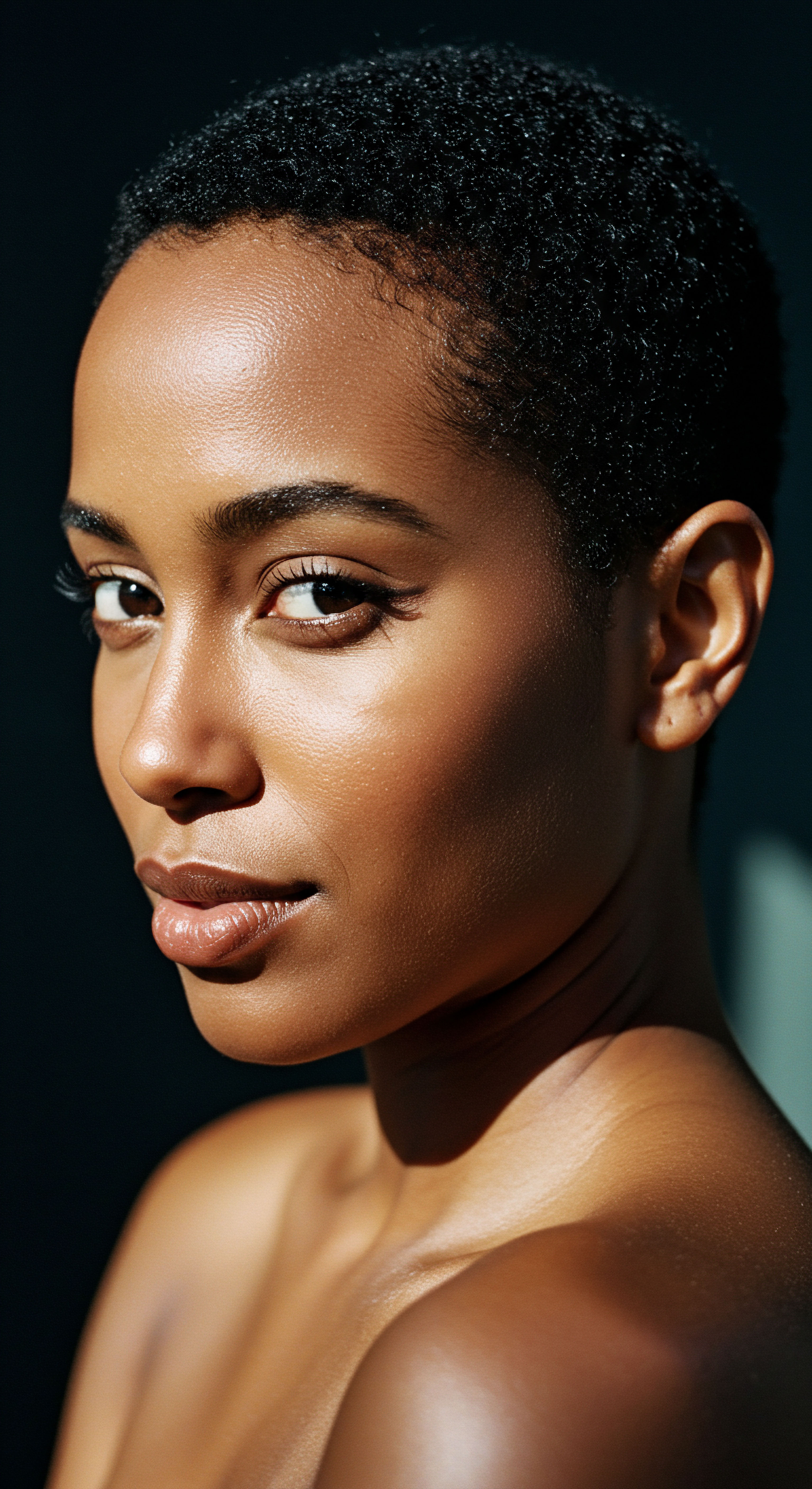
Hydration Strategies for Varied Textures
The diverse spectrum of textured hair demands a tailored approach to hydration. What works wonders for a loose curl might not suit a tightly coiled strand, primarily due to differences in cuticle structure and inherent porosity. The goal is to provide moisture in a way that respects the hair’s natural tendencies, allowing it to absorb what it needs without becoming oversaturated or losing hydration too quickly.
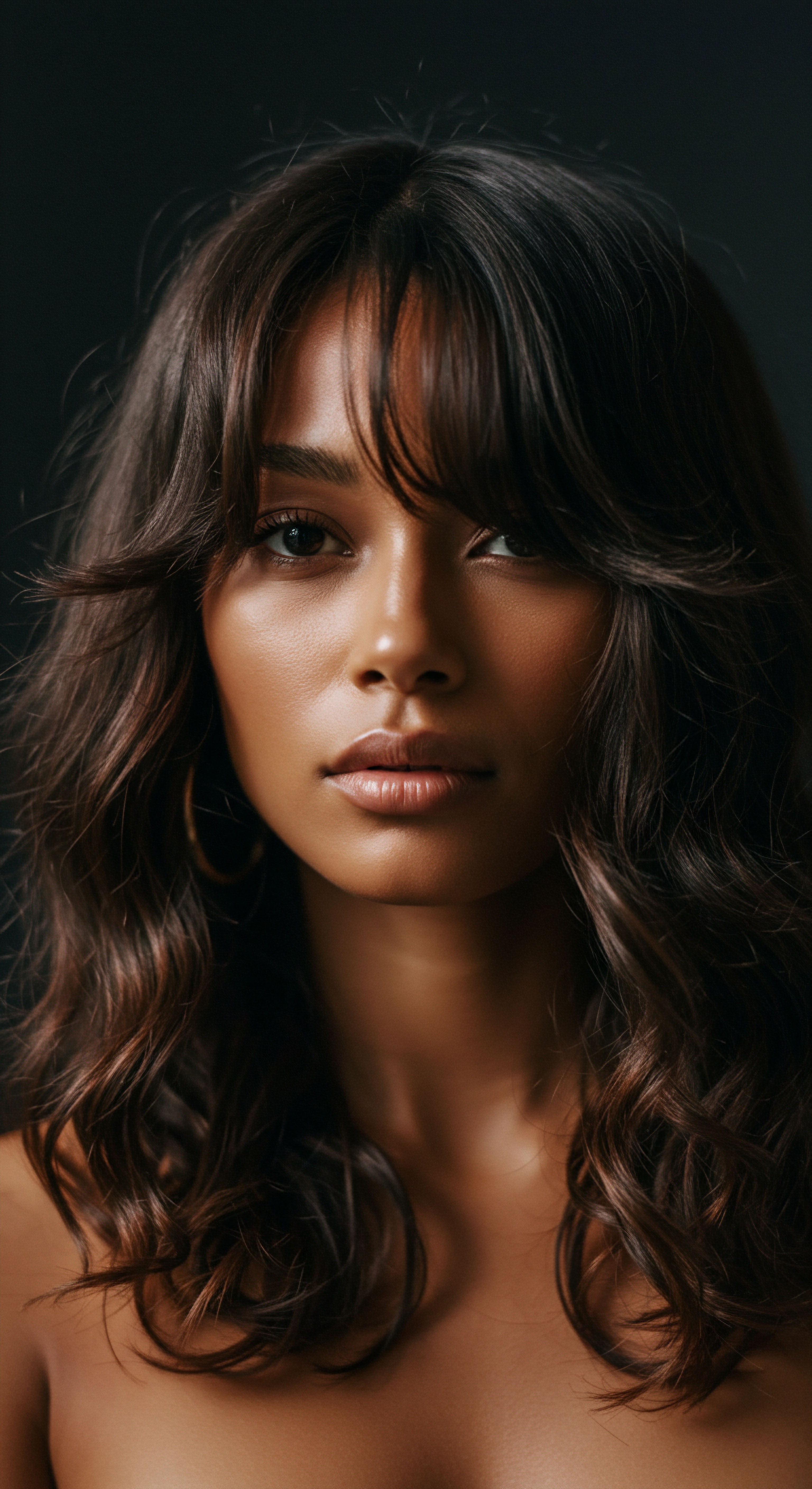
Customizing Product Selection for Porosity
The porosity of hair, often an inherited characteristic, serves as a compass for product selection.
- For High Porosity Hair ❉ This hair type, with its open cuticles, readily absorbs water but struggles to hold onto it. Products that help seal the cuticle are paramount.
- Heavy Butters and Creams ❉ These formulations often contain occlusive ingredients that create a protective layer, minimizing moisture loss.
- Protein Treatments ❉ Regular use of protein-rich conditioners can help temporarily fill gaps in the cuticle, strengthening the hair and reducing excessive water absorption.
- Layering Techniques ❉ The “LOC” (Liquid, Oil, Cream) or “LCO” (Liquid, Cream, Oil) method can be highly effective, layering a water-based product, followed by an oil, and then a cream, to seal in hydration.
- For Low Porosity Hair ❉ Characterized by tightly closed cuticles, this hair type can resist water penetration. The challenge lies in helping moisture get in.
- Lightweight, Humectant-Rich Products ❉ Ingredients like glycerin or hyaluronic acid can draw moisture from the air into the hair.
- Heat Activation ❉ Applying products to damp hair under a hooded dryer or with a steamer can help gently lift the cuticle, allowing for better product absorption.
- Avoid Heavy Oils and Butters Initially ❉ These can sit on top of the hair, creating buildup and preventing moisture from reaching the inner cortex.
Understanding the hair’s inherent ability to absorb and retain water is a powerful tool in selecting appropriate care products.

The Science of Conditioning and Sealing
Conditioning textured hair is a nuanced practice. Conditioners work by smoothing the cuticle, reducing friction, and imparting slip, making detangling easier. For textured hair, which is prone to dryness and breakage due to its structural characteristics, effective conditioning is a daily necessity.
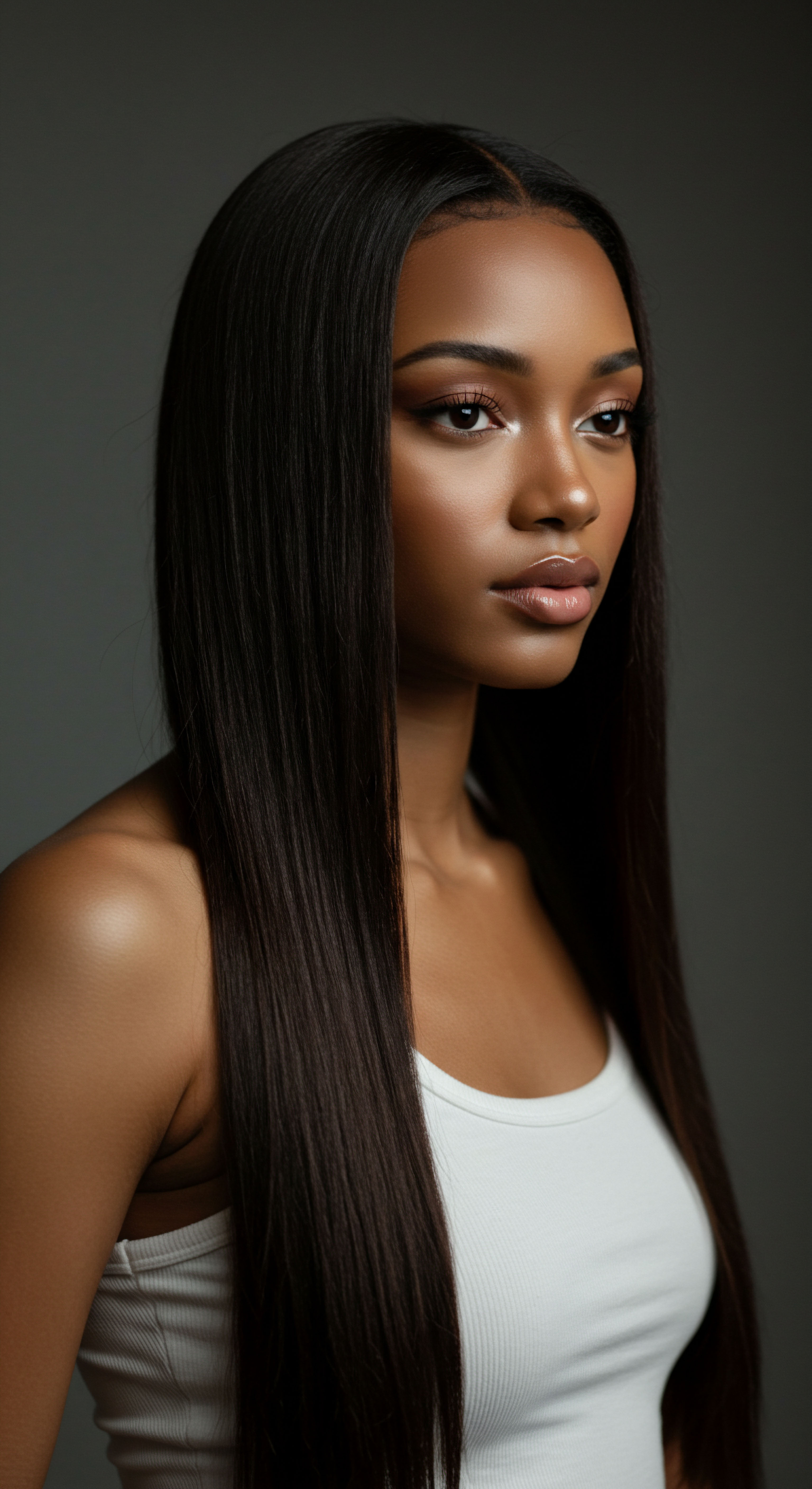
How Do Conditioners Aid Moisture Retention?
Conditioners typically contain cationic surfactants, which have a positive charge that attracts to the negatively charged surface of the hair. This interaction helps to smooth down the cuticle scales, reducing the surface area for water evaporation and creating a more hydrophobic (water-resisting) barrier. Silicones, often found in conditioners, can also contribute to this sealing effect, providing slip and shine.
Strategic conditioning helps to smooth the hair’s cuticle, which minimizes moisture loss from textured strands.
The application of oils and butters after conditioning serves as a further sealing step. While African hair exhibits a higher overall lipid content, particularly apolar lipids, their disordered arrangement can mean less effective moisture retention compared to hair types with more ordered lipid structures. This highlights the importance of external lipid application to supplement the hair’s natural defenses against water loss. These external lipids create a barrier, preventing the rapid escape of water molecules from the hair shaft, especially crucial for highly porous strands.
| Hair Texture Type Loose Waves (2A-2C) |
| Typical Moisture Challenge Can experience dryness at ends, prone to frizz in humidity. |
| Recommended Product Focus Lightweight creams, leave-in conditioners, curl activators. |
| Styling Technique Support Air drying, scrunching, minimal manipulation. |
| Hair Texture Type Curly (3A-3C) |
| Typical Moisture Challenge General dryness, definition loss, susceptibility to tangles. |
| Recommended Product Focus Hydrating milks, curl custards, moisturizing gels. |
| Styling Technique Support Wash and go, twist-outs, braid-outs for definition. |
| Hair Texture Type Coily (4A-4C) |
| Typical Moisture Challenge Significant dryness, shrinkage, breakage vulnerability. |
| Recommended Product Focus Heavy butters, rich creams, deep conditioners, pure oils. |
| Styling Technique Support Protective styles, LCO method, steaming for absorption. |
| Hair Texture Type Tailoring moisture approaches to hair texture can significantly improve health and appearance. |
Beyond product application, the manner in which we manipulate textured hair profoundly impacts its moisture retention. Gentle detangling, using wide-toothed combs or fingers, minimizes breakage and preserves the cuticle’s integrity. Protective styles, which tuck away the ends of the hair, reduce exposure to environmental elements and mechanical stress, thereby helping to maintain hydration over longer periods.

Relay
As we delve deeper into the interplay of inherited traits and textured hair’s moisture needs, we encounter a complex panorama where biological predispositions intersect with cultural practices and environmental influences. This section moves beyond surface-level discussions, inviting us to consider the profound, multi-dimensional connections that shape our hair’s hydration story. It is here that we truly appreciate the scientific underpinnings of hair health, recognizing that our hair is a living record of both our individual genetic makeup and the collective human experience.
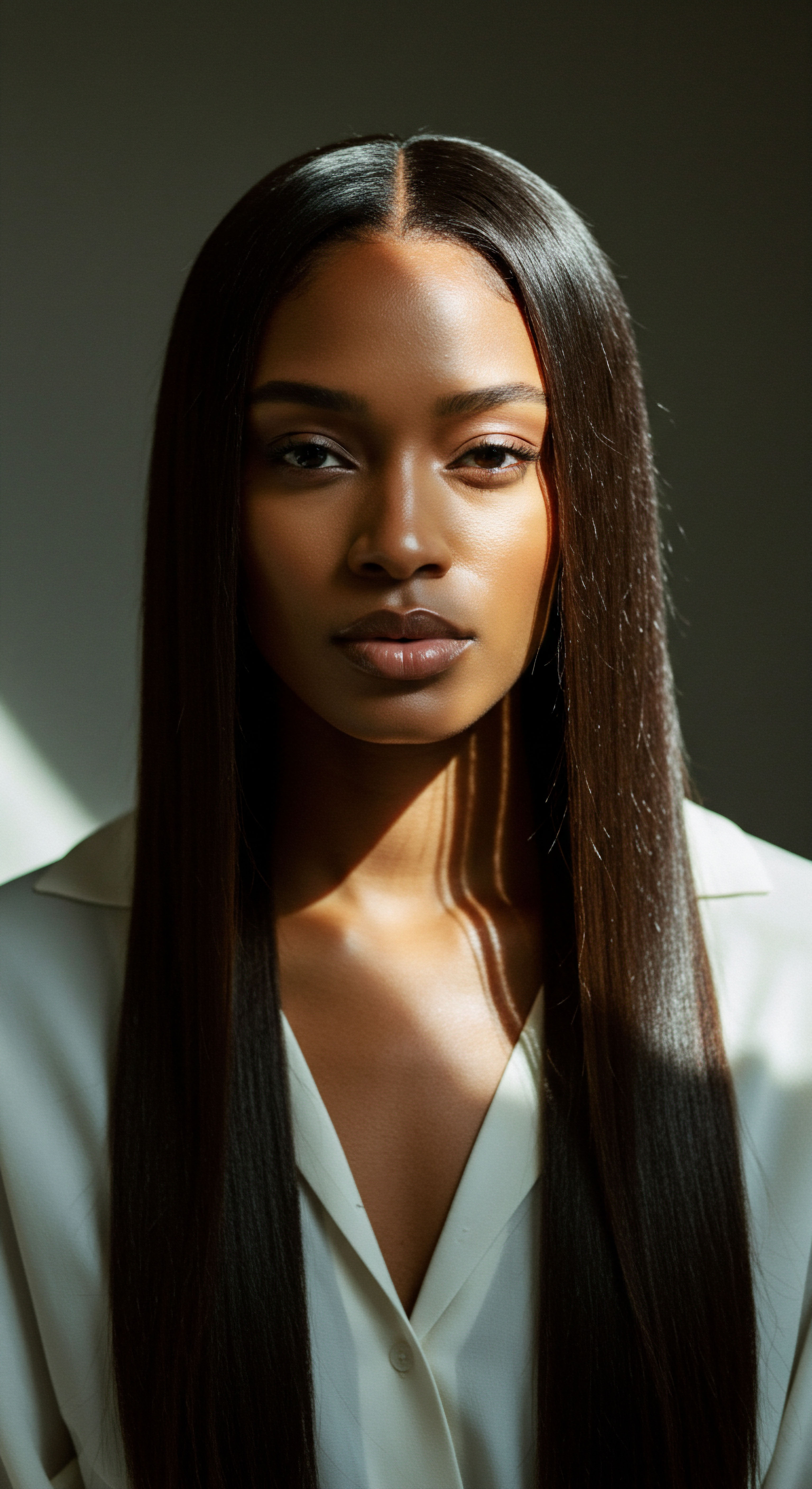
Genetic Variations and Hair’s Water Dynamics
The human genome holds a vast library of information, with specific segments influencing the very characteristics of our hair. While the overall curl pattern is well-known to be genetically determined, the subtle ways genes impact hair’s ability to interact with water are still being uncovered. Research suggests that certain genetic variations, often single nucleotide polymorphisms (SNPs), contribute to differences in hair shaft diameter, keratinization, and hair follicle patterning across various populations. These variations, in turn, can affect hair’s permeability and its propensity for moisture loss.

How Do Genetic Markers Influence Hair Porosity?
The inherent porosity of textured hair, whether high or low, is not a random occurrence; it is a reflection of genetic predispositions that shape the cuticle structure. While direct genetic markers for hair porosity are still being thoroughly mapped, the genes influencing keratin protein arrangement and lipid composition within the hair fiber play a significant part. For instance, the expression of certain keratin-associated proteins (KRTAPs) and the organization of disulfide bonds can contribute to how tightly or loosely the cuticle scales are bound. A more open cuticle, leading to higher porosity, might be genetically predisposed in some individuals, necessitating a consistent and deliberate approach to sealing in moisture.
Consider the broader biological context of moisture regulation in the body. Aquaporins, a family of membrane channels, are known to transport water and other small solutes across cell membranes. While primarily studied in skin for their role in epidermal hydration, particularly Aquaporin-3 (AQP3) in maintaining stratum corneum glycerol, which acts as a humectant, their potential indirect influence on hair’s water balance through scalp health cannot be overlooked. An optimal functioning scalp barrier, influenced by genetic factors, can create a healthier environment for hair growth and potentially aid in overall hair moisture retention.
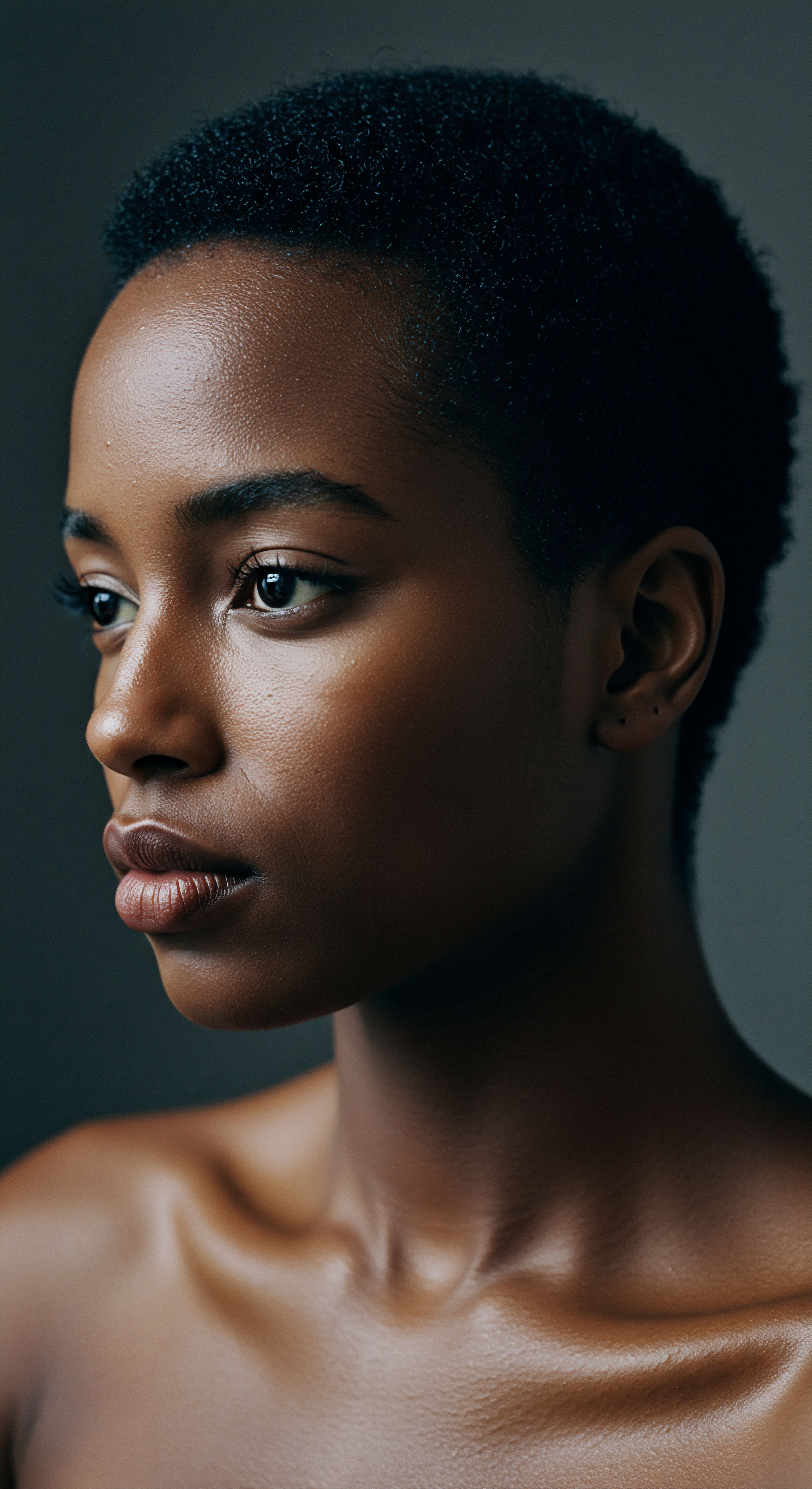
The Scalp Microbiome and Its Inherited Link to Hair Moisture
The scalp is a dynamic ecosystem, home to a diverse community of microorganisms that collectively form the scalp microbiome. This microbial landscape is not isolated from our inherited traits; indeed, genetic factors play a significant part in determining scalp characteristics such as sebum production, hair density, and follicle type, all of which influence the microbiome’s composition. An imbalanced scalp microbiome, or dysbiosis, can lead to conditions like dandruff or inflammation, which can indirectly affect hair health and its ability to retain moisture.

Can Inherited Scalp Conditions Impact Hair Hydration?
Indeed, inherited predispositions to certain scalp conditions can profoundly affect hair’s moisture needs. For example, individuals genetically prone to conditions that compromise the scalp’s barrier function, such as atopic dermatitis, may experience secondary effects on their hair. The skin barrier, which includes the scalp, is crucial for preventing water loss. When this barrier is compromised, the scalp may become dry and irritated, potentially leading to hair that also struggles with moisture retention.
Research on Filaggrin-2 (FLG2) Gene Mutations in African Americans with atopic dermatitis points to a genetic link to impaired skin barrier function and reduced moisture retention. While this research focuses on skin, the interconnectedness of skin and hair means that a compromised scalp environment, stemming from inherited predispositions, can directly influence the hydration status of the hair strands emerging from it.
This subtle, yet profound, connection underscores the need for a holistic approach to textured hair care, one that considers the scalp as an extension of the hair’s overall well-being.
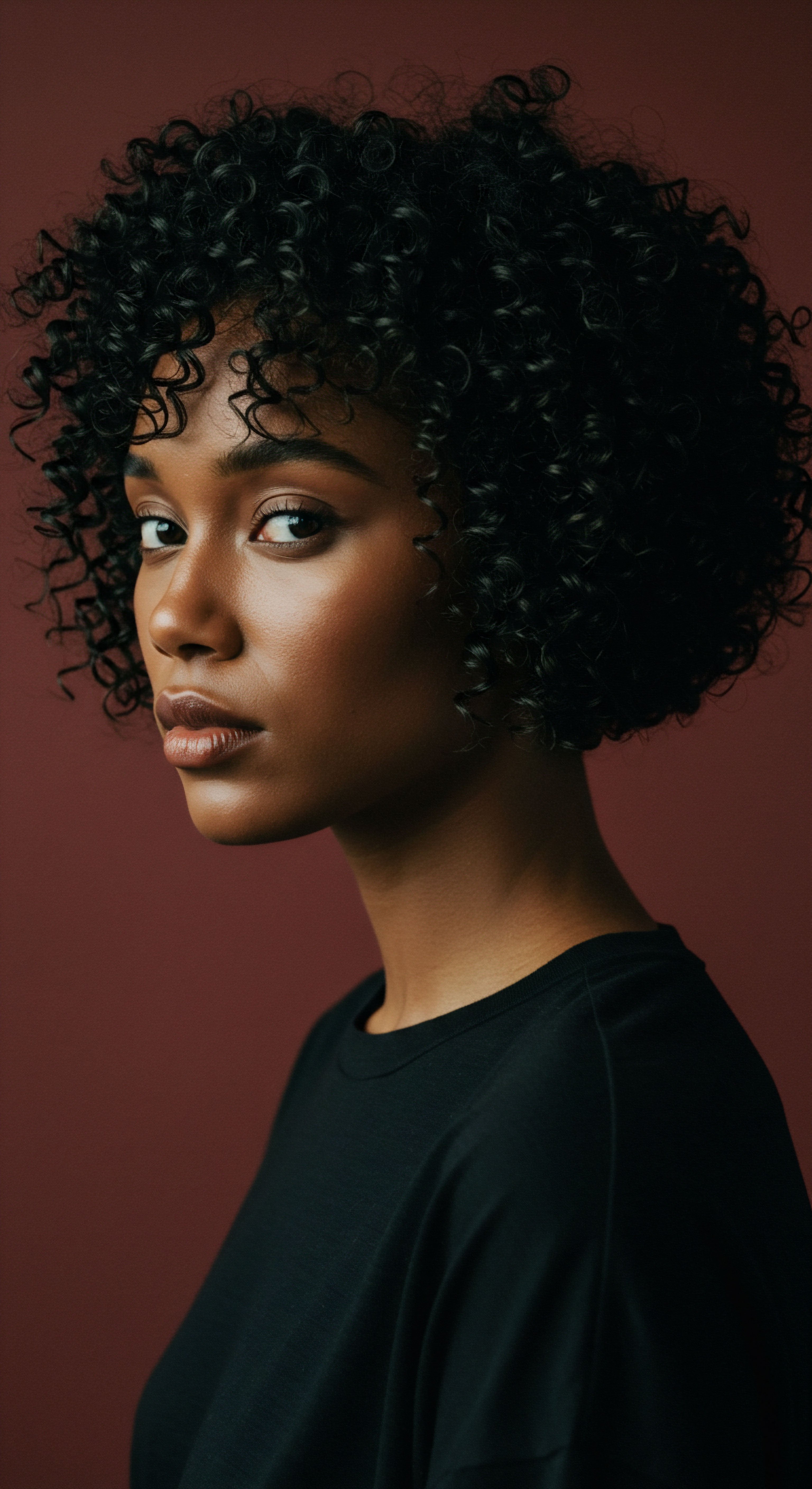
The Interplay of Ancestry, Structure, and Environment
The concept of “ethnic hair” encompasses a vast range of variations, with African hair generally exhibiting the highest degree of curl and unique structural characteristics. Studies comparing lipid distribution across different ethnic hair types reveal compelling differences. For example, African hair has been shown to possess a higher overall lipid content, particularly apolar lipids, compared to Asian and European hair.
Yet, paradoxically, Afro-textured hair is often characterized by dryness. This apparent contradiction is resolved by considering the organization of these lipids and the hair’s inherent structure. The lipids in African hair may be more disordered, and the highly curved nature of the hair shaft itself creates points of weakness and increased surface area, leading to faster moisture loss despite higher lipid content. This structural reality means that while the genetic endowment may include abundant lipids, the architectural challenges necessitate diligent external moisture management.
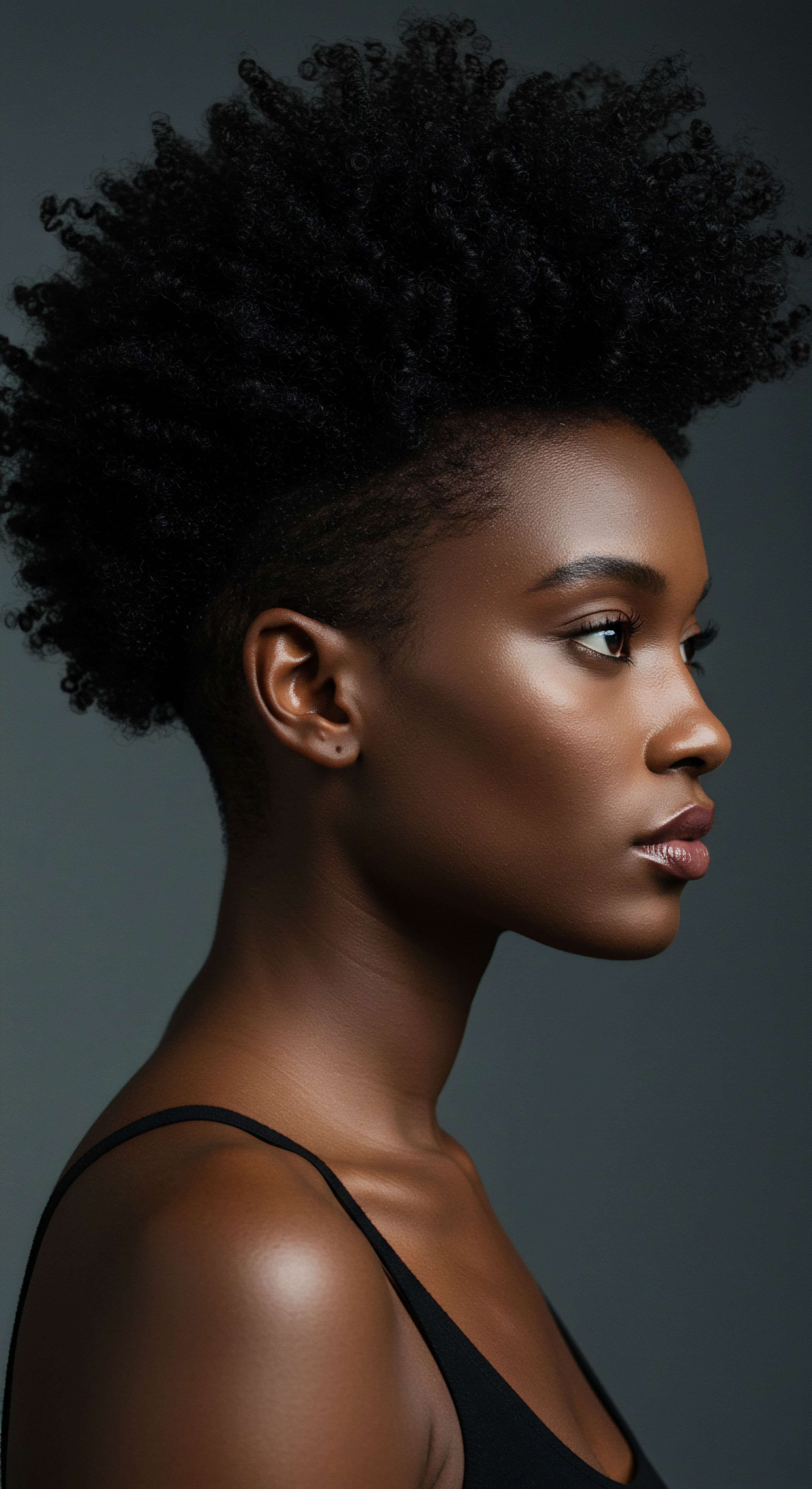
What Unique Biomechanical Traits Shape Textured Hair Moisture?
The biomechanical properties of textured hair are inherently tied to its unique spiral and elliptical follicle shape. These features result in areas of reduced mechanical strength and a greater propensity for breakage, especially when the hair is dry. The repeated bending and twisting of highly coiled strands during daily activities and styling can lead to cuticle damage, further exacerbating moisture loss.
Understanding these biomechanical vulnerabilities, which are rooted in inherited follicle morphology, is crucial for developing care strategies that prioritize gentle handling and protective styling. The goal is to minimize stress on the hair fiber, preserving its structural integrity and, consequently, its ability to retain vital hydration. The journey of understanding textured hair moisture needs is therefore a profound exploration into the genetic legacies we carry, the daily rituals we perform, and the dynamic environment we navigate, all converging to shape the vitality of our strands.

Reflection
The journey through the intricate world of textured hair and its moisture needs leaves us with a deeper appreciation for the silent, yet powerful, influence of inheritance. Each strand carries a story written in its very DNA, a testament to generations past and a guide for present care. We come to understand that dryness is not merely a superficial concern, but a complex interplay of genetic predispositions, the unique architecture of the hair follicle, the molecular composition of the hair fiber, and even the unseen ecosystem of the scalp.
This understanding shifts our perspective from simply addressing symptoms to truly honoring the inherent nature of textured hair, recognizing its beauty, its resilience, and its specific requirements. It is a call to embrace a more informed, gentle, and celebratory approach to care, one that acknowledges the profound wisdom held within each curl and coil.

References
- Oladele, D. B. Markiewicz, E. & Idowu, O. C. (2024). The Genomic Variation in Textured Hair ❉ Implications in Developing a Holistic Hair Care Routine. Cosmetics, 11(6), 183.
- Montagna, W. & Ellis, R. A. (Eds.). (1958). The Biology of Hair Growth. Academic Press.
- Randall, V. A. (2008). Hair Loss ❉ The Complete Guide to Hair Loss and Its Treatment. CRC Press.
- Trueb, R. M. & Dias, M. F. R. G. (Eds.). (2018). Female Alopecia ❉ Guide to Diagnosis and Treatment. Springer.
- Kreplak, L. et al. (2015). The influence of hair lipids in ethnic hair properties. International Journal of Cosmetic Science, 38(1), 77-84.
- Okuda, K. et al. (2013). First genetic mutations linked to atopic dermatitis identified in African-American children. Journal of Allergy and Clinical Immunology.
- Hara, M. et al. (2002). Aquaporin-3 is involved in epidermal hydration and barrier function. Journal of Investigative Dermatology, 118(1), 22-29.
- Gammon, J. R. & Sontheimer, R. D. (2019). The biology and genetics of curly hair. Journal of the American Academy of Dermatology, 81(1), 22-31.
- Lee, Y. et al. (2018). Comparison of Healthy and Dandruff Scalp Microbiome Reveals the Role of Commensals in Scalp Health. Frontiers in Cellular and Infection Microbiology, 8, 363.
- Popescu, C. & Gummer, C. L. (2009). The effect of water on the mechanical properties of human hair. International Journal of Cosmetic Science, 31(1), 47-58.
- Robbins, C. R. (2012). Chemical and Physical Behavior of Human Hair (5th ed.). Springer.
- Cruz, C. F. et al. (2019). Ethnic hair ❉ Thermoanalytical and spectroscopic differences. International Journal of Cosmetic Science, 41(6), 570-577.
- Aho, V. et al. (2022). Comparative analysis of scalp and gut microbiome in androgenetic alopecia ❉ A Korean cross-sectional study. Scientific Reports, 12(1), 21258.
- Panhard, S. et al. (2012). The biology and genomics of human hair follicles ❉ A focus on androgenetic alopecia. Journal of Investigative Dermatology Symposium Proceedings, 17(1), 12-17.
- Oladele, D. B. et al. (2024). Genomic Variation in Textured Hair ❉ Implications for Holistic Hair Care. Preprints.org.